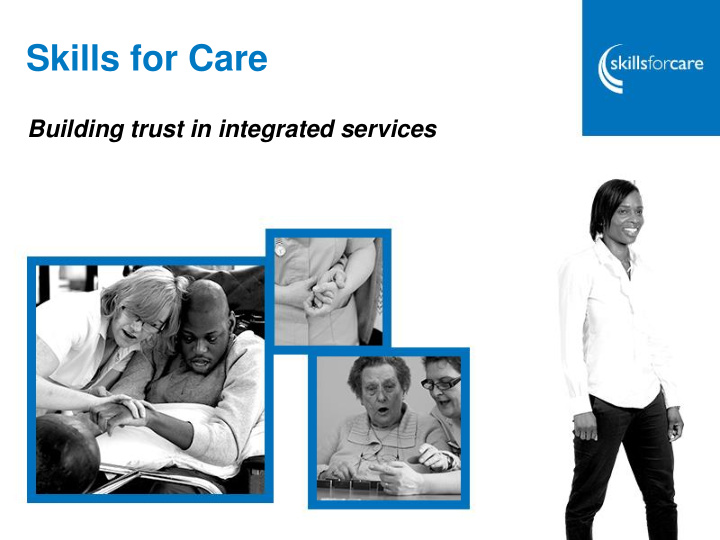



Skills for Care Building trust in integrated services
Workshop focus Consider the integrated care systems that we are currently involved with, how do they match up to our top tips? Share examples of good practice about where collaboration has helped to build solid relationships and trust.
Workforce integration Building trust between social care and health organisations Working across the social care and health boundaries to improve people’s experience of hospital admission and discharge back to the community
1. Build a shared statement of purpose “Effective working can be facilitated by shared agendas” It’s vital to have good leadership and a statement of purpose or vision which focuses on improving integration, working collaboratively and planning together. This should be communicated clearly through integrated care systems along with shared performance indicators. Partners should embrace and adopt person centred care as the principle for working together and this should be the focus for all policy and practice solutions.
2. Develop clear plans and pathways “Joint working can be improved through clear plans and pathways” We know that when it works well there are processes in place for admission and discharge that everyone including the person themselves understands and works to. This includes a joint assessment processes, transport plans, arrangements for medication, follow up care and reviews and other practical factors that impact on the efficiency of admissions and discharges.
3. Review current responsibilities Things work well when there are better links between teams Examine your current practice and processes, identify who is responsible for what and what communication there is around this; and then review. Learn from best practice elsewhere and consider if there is a need for specialist roles or improved awareness of who is responsible for what.
4. Establish clear lines of responsibility and accountability Blurred lines of responsibility can interfere with building good relationships between the health and care sectors. Establish a culture of openness, transparency, honesty and desire to work in a person-centred way to achieve the best outcomes. Consider identifying a key worker or specialist role who can lead the process, this could be a care navigator or care co- ordinator.
5. Establish mutual professional respect 45% of social care respondents to an online survey said they were not treated with the same respect as other colleagues - and this happened on a weekly basis.” What does this mean in practice for you?
6. Review current communication methods Stockton and Hartlepool Integrated Discharge Team was created to reduce unnecessary delays in discharging patients from hospital and provide a patient centred approach to discharge for the benefit of patients and to give them more choice and control.
7. Improve information sharing Access to information and good information sharing processes can be a challenge due to practical barriers like technology and data protection concerns. There is a need to improve the way this takes place though, and to find practical workable solutions to meet the individual’s personal needs and preferences. One example is the well documented ‘ redbag scheme’ .
Group discussion • On tables share your experiences of working collaboratively across social care and health • In relation to our building trust top tips….what are the key challenges for you in your setting? • What are your good practice examples / solutions • Be prepared to share one situation with positive outcomes
Recommend
More recommend